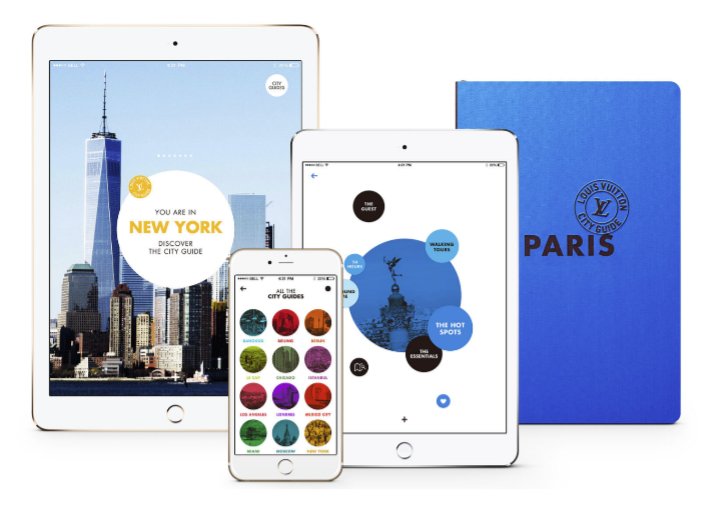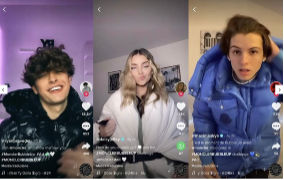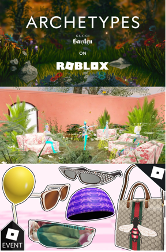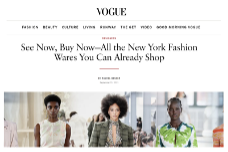BLOG
Bringing Luxury Online – Finding Success with DTC Marketing Tactics
Companies like Gucci, Moncler and Louis Vuitton are reaching young shoppers with disruptive digital tactics.
Luxury retail as we’ve known is over. It’s ‘last season’ exclusivity and high barriers to entry are shifting toward online democratization. Critical to this redefined luxury is an effortless curation of content, community and commerce tactics to win the hearts and wallets of digitally and socially aware consumers.
Let’s look at how successful luxury brands are using DTC marketing tactics to reach new audiences.
Content: From Fashion House to Content House
the core of any direct-to-consumer model is the creation of content and the spurring of relevant discussions among loyal customer bases and beyond.
From curated city guides to an Instagram feed that gives Vogue a run for its money, Louis Vuitton’s Louis Vuitton City Guides has a firm grip on the digital content pulse.
These guides highlight must-visit sights, stores and snacks in major cities across the globe, offering customers a glimpse of the world and what it’s like as a Louis Vuitton jetsetter. With new cities added frequently, Louis Vuitton is keeping customers engaged with more insider guides and luxury travel accessories to outfit their journeys.

Additionally, brands like Moncler are vying for a Gen Z following on digital platforms such as TikTok, which has been steeped in DTC marketing since its inception. Through its #MonclerBubbleUp challenge, Moncler leveraged both paid and organic content marketing – including dynamic products, collections, and lead generations ads – to reach nearly 7 billion impressions including those from followers who used #TikTokMadeMeBuyIt when featuring Moncler products in their content.

Community: Access to Luxury Doesn’t Have to be an Alternate Reality
In the old days of luxury retail, tight-knit brand communities were often limited to those in the upper-echelon of customer spending. The feeling of exclusivity and access was often formed through limited in-person shopping experiences with customers donned from head-to-toe in the brands’ latest offerings.
Today, brands are moving these communities and their associated status symbols online. In the digital world, consumers have a direct route for engagement with brands through their DTC marketing channels and content – and feel closer to brands beyond a purely aspirational intent to purchase their goods.
Gamification is one such method brands are leveraging to redefine what it means to be a part of the luxury community. For example, in honor of its 100th anniversary, Gucci aimed to spur engagement among its online communities. To do so, they teamed up with Roblox to launch the Gucci Garden Experience, a digital experience experiment in the metaverse. Users were transported to ornate showrooms where they could browse and interact with digital versions of exclusive Gucci products. They also had the opportunity to ‘purchase’ luxury items to ‘guccify’ their metaverse. The event spurred visits from more than 1 million Roblox users.
By departing from tradition and leaning into democratized innovation, Gucci led a luxury brand movement toward new ways of engagement through innovative spaces and online communities, ultimately creating a loyal customer base.

Commerce: See Now, Buy Now
Fashion Weeks across the globe are known for their exclusive invite lists and designs. However, brands leading the way in the new era of luxury are challenging fashion week norms and creating increased access through a ‘see now, buy now’ approach. This allows viewers to purchase designs in real-time as they are revealed on the runway rather than waiting for exclusive commercial releases and has so far taken the latest New York Fashion Week by storm.
For example, the Dundas x Revolve show experienced a sold-out collection in lockstep when its pieces sauntered down the catwalk. Luxury stalwarts like Altuzarra, Oscar de la Renta and Rodarte also leveraged the see now, buy now commerce model and included live streams of their shows to increase access and encourage purchases among raving new fans.

What’s in ‘Store’ for Luxury Online
Using real-time engagement features – including live streams of product presentations – Tmall’s Luxury Pavilion of digital shops can connect brands and their customers together to spur more personalized digital shopping experiences. With over 100,000 monthly active users on the Luxury Pavilion accounting for nearly 45% of total spending on the Tmall site, the demand for bridging online and offline luxury retail experiences through DTC marketing tactics is strong.
“Direct-to-consumer principles are creating a lasting impression on luxury brands, and in turn, creating engaged.”
FINAL THOUGHTS
Through the optimization of digital channels, conversation amongst digital communities, and the online democratization of the elusive fashion week, direct-to-consumer principles are creating a lasting impression on luxury brands, and in turn, creating engaged current and future customers.
No matter your model, if you want to gain relentless relevance and digital prowess using DTC marketing tactics, brands need to consider the following questions:
- How might we create content that inspires interaction through owned and earned media in the age of mass media consumption?
- How and where can we extend and deepen our relationships with customers through community building and authentic engagement?
- How might we create more accessible, frictionless customer experiences that spur acquisition and retention?
Prophet is helping companies leverage direct-to-consumer practices around content, community, and commerce to drive growth and redefine industries. If you are interested in learning more about our direct-to-consumer expertise, contact us today.

